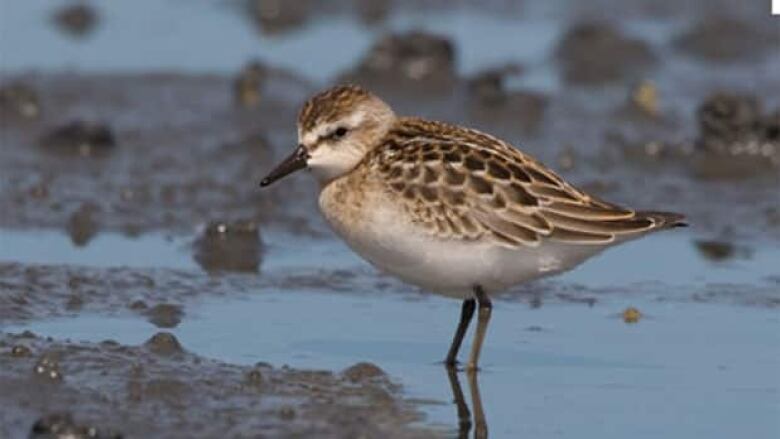State of Canada's Bird report shows steep decline in several species
Nature Conservancy of Canada is 'sprucing up' the Grand Manan Island Migratory Bird Sanctuary on Saturday

The State of Canada's Birds reportreleased this week bythe North American Bird Conservation Initiative shows a steep decline in a number of species.
Birds dependent on native grasslands have been hit the hardest with an 87 per cent decrease since 1970, the report found.
Aerial insectivore birds declined by 59 per cent, long-distance migratory shorebirdsby55 per cent, and migratory shorebirds by 40 per cent.
Fifty-five of 58 seabirds that use Canadian waters are listed as "of conservation concern" and 20 of them are at risk of extinction.
One of the reasons for the shrinking numbers is loss of habitat, according to the report,produced by the North American Bird Conservation Initiative, under the leadership of Environment and Climate Change Canada, Bird Studies Canada, Ducks Unlimited Canada and Nature Canada.
Land conservation, sustainable agricultural practices and climate change adaptation to combat rising sea levels and loss off breeding habitatsare needed to help rescue these birds from the brink, according to the report.
Waterfowls appearto be a case in point. Their populations have rebounded by 150 per cent from historically low levels in the '70s.
The report points to a ban on spraying the toxic pesticide DDT as one of the reasons, along with the North American Wetlands Conservation Act.
"This gives us some hope that we can reverse the declines in other bird groups through habitat protection and community involvement and co-ordinated conservation efforts across a different range of birds," saidAndrew Holland,national media relations director for the Nature Conservancy of Canada.
Seeking volunteers Saturday
The Nature Conservancy has a restoration project underway Saturday attheGrand MananIsland Migratory Bird Sanctuary and is looking for volunteers to help.
The sanctuary, located next to the Anchorage Provincial Park, is home to more than 350 species of birds, said Holland.
At least 10 of them are listed under the Canadian Species at Risk Act, including red knots, which are considered endangered in Canada, he said.
The Nature Conservancy has helped protect 632 acres of coastal wetlands and valuable wildlife habitat on the island of Grand Manan and is restoring one of the properties that was used as a dump site for years.
The project began last summer with the removal of garbage bags and other large items, but there is still a large amount of debris, including plastic containers, rope, wire and metal, said Holland.
"We just don't want you to have these birds get tangled up or ingest it and cause themselves a lot of harm," he said.
The "Sprucing up the Sanctuary" event is taking place 9 a.m. to 1 p.m., rain or shine, he said.
Lunch will be provided and there will be birding activities afterward, so volunteers may want to bring some binoculars.
To register, visit www.conservationvolunteers.ca.
With files from Information Morning Saint John












_(720p).jpg)


 OFFICIAL HD MUSIC VIDEO.jpg)
.jpg)



























































































